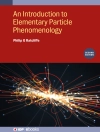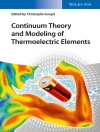Using potassium as an example, this work presents a unique approach to the anomalous effects in metals, resulting in knowledge that can be applied to similar materials.
Most theoretical predictions on the electric, magnetic, optical, and thermal properties of a simple metal do – surprisingly – not agree with experimental behavior found in alkali metals. The purpose of this volume is to document the many phenomena that have violated expectations. It collects in one place the research by Albert Overhauser, one of the pioneers of the field. His and his collaborators work has led to a unified synthesis of alkali metal peculiarities. The unique collection of 65 reprint papers, commented where necessary to explain the context and perspective, is preceded by a thorough and well paced introduction.
The book is meant to advanced solid state physics and science historians.
It might also serve as additional reading in advanced solid state physics courses.
With a foreword by Mildred and Gene Dresselhaus
Tabella dei contenuti
Part I Introduction and Overview
Part II Reprints of SDW or CDW Phenomena in Simple Metals
R1 Giant Spin Density Waves
R2 Mechanism of Antiferromagnetism in Dilute Alloys
R3 Spin Density Waves in an Electron Gas
R4 Spin- Density- Wave Antiferromagnetism in Potassium
R5 Helicon Propagation in Metals Near the Cyclotron Edge
R6 Exchange and Correlation Instabilities of Simple Metals
R7 Splitting of Conduction- Electron Spin Resonance in Potassium
R8 Magnetoresistance of Potassium
R9 Exchange Potentials in a Nonuniform Electron Gas
R10 Observability of Charge- Density Waves by Neutron Diffraction
R11 Questions About the Mayer- El Naby Optical Anomaly in Potassium
R12 Theory of the Residual Resistivity Anomaly in Potassium
R13 Electromagnetic Generation of Ultrasound in Metals
R14 Dynamics of an Incommensurate Charge- Density Wave
R15 Magnetodynamics of Incommensurate Charge- Density Waves
R16 Phase Excitations of Charge Sensity Waves
R17 Frictional Force on a Drifting Charge- Density Wave
R18 Attenuation of Phase Excitations in Charge- Density Wave Systems
R19 Charge- Density Waves and Isotropic Metals
R20 Residual- Resistivity Anisotropy in Potassium
R21 Detection of a Charge- Density Wave by Angle- Resolved Photoemission
R22 Ultra- low- temperature Anomalies in Heat Capacities of Metals Caused by Charge- density Waves
R23 Analysis of the Anomalous Temperature- dependent Resistivity on Potassium Below 1.6 K
R24 Wave- Vector Orientation of a Charge- Density Wave in Potassium
R25 Theory of Transversce Phasons in Potassium
R26 Charge- Density- Wave Satellite Intensity in Potassium
R27 Theory of Electron- Phason Scattering and the Low- temperature Resistivity of Potassium
R28 Structure Factor of a Charge- Density Wave
R29 Effective- Medium Theory of Open- Orbit Inclusions
R30 Theory of the Open- Orbit Magnetoresistance of Potassium
R31 Open- Orbit Magnetoresistance Spectra of Potassium
R32 The Open Orbits of Potassium
R33 Open- Orbits Effects in Thermal Magnetoresistance
R34 Insights in Many- Electron Theory From the Charge Density Wave Structure of Potassium
R35 Charge Density Wave Phenomena in Potassium
R36 Energy Spectrum of an Incommensurate Charge- Density Wave: Potassium and Sodium
R37 Theory of Charge- Density- Wave- Spin- Density- Wave Mixing
R38 Crystal Structure of Lithium at 4.2 K
R39 Theory of Induced- Torque Anomalies in Potassium
R40 Further Evidence of an Anisotropic Hall Coefficient in Potassium
R41 Field Dependence of the Residual- Resistivity Anisotropy in Sodium and Potassium
R42 Effect of an Inhomogeneuous Resistivity on the Induced- Torque Pattern of a Metal Sphere
R43 Infrared- absorption Spectrum of an Incommensurate Charge- Density Wave: Pottassium and Sodium
R44 Dynamic M-shell Effects in the Ultraviolet Absorption Spectrum of Metallic Potasium
R45 Broken Symmentry in Simple Metals
R46 Photoemission from the Charge- Density Wave in Na and K
R47 Phason Narrowing of the Nuclear Magnetic Resonance in Pottassium
R48 Theory of the Perpendicular- Field Cyclotron- Resonance Anomaly in Potassium
R49 Direct Observation of the Charge-Density Wave in Potassium by Neutron Diffraction
R50 Phason Anisotropy and the Nuclear Magnetic Resonance in Potassium
R51 Satellite-Intensity Patterns From the Charge-Density Wave in Potassium
R52 Magnetoserpentine Effect in Single-Crystal Potassium
R53 Charge Density Wave Satellites in Potassium?
R54 Fermi-Surface Structure of Potassium in the Charge-Density-Wave State
R55 Neutron-Diffraction Structure in Potassium Near the [011] and [022] Bragg Points
R56 Quantum Oscillations From the Cylindrical Fermi-Surface Sheet of Potassium Created by the Charge-Density Wave
R57 Magnetotransmission of Microwaves Through Potassium Slabs
R58 Microwave Surface Resistance of Potassium in a Perpendicular Magnetic Field: Effects of the Charge-Density Wave
R59 Cyclotron-Resonance Transmission Through Potassium in a Perpendicular Magnetic Field: Effects of the Charge-Density Wave
R60 Influence of El
Circa l’autore
Albert Overhauser graduated in Physics and Mathematics at the University of California, Berkeley. In 1951 he was awarded the Ph.D. in Physics for research carried out under the supervision of Charles Kittel. He began his professional career at the University of Illinois where he developed his famous theory of dynamic nuclear polarization which shortly after its experimental confirmation became known by its current name, the Overhauser effect. In 1953 he went to Cornell, which he left in 1958 to accept a position at Ford. In 1973 he became Professor of Physics at Purdue University.
Albert Overhauser has received numerous distiguished honors, and in 1994 was being awarded the National Medal of Science; the highest honor the United States bestows on its citizens for scientific achievement, ‘For his fundamental contributions to understanding the physics of solids, to theoretical physics and for the impact of his technological advances…’












